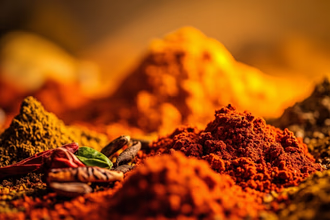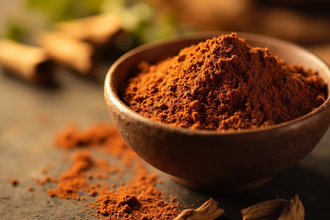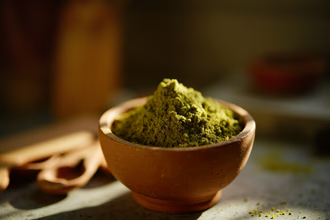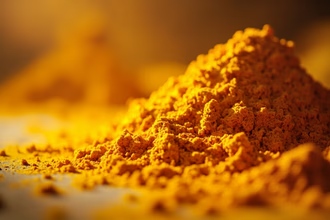Aromatic Spices from India: A Culinary Exploration with VH Global Export
India has long been recognized as a global leader in spice production, consumption, and export [5]. With a rich agricultural heritage and favorable climate, India produces about 75 of the 109 spice varieties recognized by the International Organization for Standardization (ISO) [5]. VH Global Export specializes in delivering India’s finest agro-products to the world [1]. They focus on premium-quality dehydrated onions, dehydrated garlic, fried onions, fried garlic, and aromatic Indian spices, sourced from India’s fertile agricultural regions [1, 2].
Spices are key ingredients in Indian dishes, celebrated worldwide for their unique flavor, aroma, and texture [4]. VH Global Export is committed to bringing the authentic tastes of India to every corner of the world [1]. With a focus on quality, consistency, and timely delivery, VH Global Export ensures its products meet international standards [2].
Key Takeaways
- India's spices are integral to its culture, cuisine, and trade, drawing global interest for centuries.
- Key Indian spices include turmeric, cumin, coriander, cardamom, and chili, each with unique flavors and health benefits.
- VH Global Export ensures spice quality through careful sourcing, cleaning, processing, and packaging, maintaining freshness and flavor.
- Proper spice storage in airtight containers, away from heat and light, maximizes flavor and shelf life.
- Experimenting with spice blends allows for creating unique flavor profiles in dishes.
- VH Global Export adheres to certifications and quality standards, guaranteeing safe and high-quality spices.
- Indian spices can be used in various simple recipes like lentil soup and vegetable curry, enhancing their versatility.
Table of Contents
- Aromatic Spices from India: A Culinary Exploration with VH Global Export
- Introduction to India's Aromatic Spice Heritage
- The Quintessential Indian Spices: A Detailed Exploration
- From Farm to Table: VH Global Export's Quality Assurance
- Culinary Applications: Recipes and Tips for Using Indian Spices
- Conclusion: Embracing the Flavors of India with VH Global Export
- Frequently Asked Questions
Introduction to India's Aromatic Spice Heritage

India has a long and storied relationship with spices, dating back centuries. These aromatic treasures are deeply woven into the fabric of Indian culture, cuisine, and trade [1]. The allure of Spices from India has drawn explorers and traders from across the globe, shaping history and influencing palates worldwide [1].
Spices are more than just ingredients in India; they are integral to religious ceremonies, medicinal practices, and everyday life [1]. The diverse climates and fertile lands of India produce a wide array of spices, each with its unique flavor profile and health benefits [1].
VH Global Export is committed to bringing the authentic flavors of India to the world. Specializing in high-quality Indian spices, VH Global Export sources its products from the best agricultural regions in India. VH Global Export offers premium-quality Dehydrated Onions, Dehydrated Garlic, Fried Onions, Fried Garlic, and aromatic Indian spices.
This article explores some of the most cherished spices from India, their culinary uses, and their cultural significance.
The Quintessential Indian Spices: A Detailed Exploration
India is known as the land of spices, and for good reason. A variety of spices are grown and used throughout the country. Here's a look at some of the most important and widely used Spices from India:
Turmeric
Origin: Turmeric comes from the rhizomes of the Curcuma longa plant, native to the Indian subcontinent [1]. It has been used in India for thousands of years, both as a spice and as a medicinal herb [1].
Flavor Profile: Turmeric has a warm, earthy flavor with slightly bitter notes [1]. Its vibrant yellow color adds visual appeal to dishes.
Culinary Uses: Turmeric is a key ingredient in many Indian curries, stews, and vegetable dishes [1]. It is also used to flavor and color rice, lentils, and beverages.
Potential Health Benefits: Turmeric contains curcumin, a compound with antioxidant and anti-inflammatory properties [1]. It is believed to have various health benefits.

Cumin
Origin: Cumin seeds come from the Cuminum cyminum plant [2]. Cumin has been used since ancient times.
Flavor Profile: Cumin has a warm, earthy, and slightly bitter flavor [2]. It is more aromatic when the seeds are roasted.
Culinary Uses: Cumin is used in a variety of dishes, including curries, stews, soups, and spice blends like garam masala [2]. It is also used to flavor breads and cheeses.
Potential Health Benefits: Cumin is a good source of iron, manganese, and other nutrients [2]. It is believed to aid digestion and have antioxidant properties.

Coriander
Origin: Coriander refers to both the seeds and leaves of the Coriandrum sativum plant [3]. It is native to the Mediterranean region but is widely cultivated in India.
Flavor Profile: Coriander seeds have a warm, citrusy, and slightly sweet flavor [3]. The leaves (cilantro) have a fresh, bright, and slightly peppery taste.
Culinary Uses: Coriander seeds are used as a spice in curries, spice blends, and pickles [3]. Fresh coriander leaves are used as a garnish and flavoring in many dishes.
Potential Health Benefits: Coriander is a good source of vitamins C and K, as well as dietary fiber [3]. It is believed to have anti-inflammatory and antimicrobial properties.

Cardamom
Origin: Cardamom comes from the seeds of several plants in the genera Elettaria and Amomum [4]. It is native to the Indian subcontinent and Southeast Asia.
Flavor Profile: Cardamom has a complex flavor that is warm, sweet, and slightly spicy [4]. It also has citrusy and floral notes.
Culinary Uses: Cardamom is used in both sweet and savory dishes [4]. It is a common ingredient in Indian desserts, beverages like chai, and spice blends like garam masala.
Potential Health Benefits: Cardamom is believed to have antioxidant and digestive properties [4]. It is also used in traditional medicine to treat various ailments.

Chili
Origin: Chilies are the fruit of plants from the genus Capsicum [5]. While not native to India, chilies were introduced to India by Portuguese traders and have become an integral part of Indian cuisine.
Flavor Profile: Chilies range in flavor from mild and sweet to intensely hot and spicy [5]. The heat level depends on the variety of chili.
Culinary Uses: Chilies are used in a wide variety of Indian dishes to add heat and flavor [5]. They are used fresh, dried, or powdered.
Potential Health Benefits: Chilies contain capsaicin, a compound that has antioxidant and anti-inflammatory properties [5]. It is also believed to boost metabolism and relieve pain.

VH Global Export ensures the quality and authenticity of its spices through rigorous sourcing and processing methods. They work directly with farmers to select the finest spices, and they use advanced technology to clean, sort, and package their products. This ensures that customers receive spices that are fresh, flavorful, and of the highest quality.
Turmeric: The Golden Spice of India
Turmeric is one of the most recognizable Spices from India. This spice has a long history and a prominent place in Indian culture and cuisine.
VH Global Export ensures the high curcumin content and purity of its turmeric through careful selection of turmeric varieties and processing methods.
Cumin and Coriander: The Aromatic Duo
Cumin and coriander are two spices that often work together in Indian cuisine. These Spices from India complement each other, creating flavorful dishes.
Cumin offers warm, earthy notes, while coriander provides citrusy undertones. This combination enhances the complexity of many Indian recipes.
Coriander is used in different forms: seeds, leaves, and powder. Coriander seeds are often roasted to enhance their flavor before being ground into a powder. Fresh coriander leaves, also known as cilantro, are used as a garnish.
VH Global Export is committed to providing fresh and flavorful cumin and coriander.
Cardamom: The Queen of Spices
Cardamom is often called the "queen of spices," and it is one of the most prized Spices from India.
Cardamom originated in the Western Ghats of India. It has a complex flavor profile that includes sweet, spicy, and slightly minty notes.
Cardamom is used in both sweet and savory dishes. It is a common ingredient in Indian desserts and beverages, as well as in some curries and stews.
There are different types of cardamom, including green and black cardamom. Green cardamom is the most common type and has a more delicate flavor. Black cardamom has a smoky flavor.
VH Global Export sources high-quality cardamom to ensure its intense aroma and flavor.
Chili: Adding Heat to Indian Cuisine
Chili peppers add heat and complexity to Indian cuisine. The diverse range of chili peppers are important Spices from India.
There are many different varieties of chilies, ranging from mild to extremely hot. The heat level of a chili is measured in Scoville heat units (SHU).
Chilies are used in various Indian dishes to add heat and flavor. They can be used fresh, dried, or ground into a powder.
VH Global Export selects and processes chilies carefully to preserve their flavor and pungency.
From Farm to Table: VH Global Export's Quality Assurance

VH Global Export takes pride in ensuring that its Spices from India reach consumers in the best possible condition. They implement strict quality control measures at every stage of the journey, from the farm to the table.
The sourcing process begins with selecting the best agricultural regions in India. VH Global Export works directly with farmers who follow sustainable and ethical farming practices.
Once the spices are harvested, they undergo a thorough cleaning process to remove any impurities. Advanced processing techniques are then used to preserve the spices' natural flavor and aroma.
VH Global Export uses packaging methods to protect the spices from moisture, light, and air. This helps to maintain their freshness and potency.
VH Global Export adheres to quality standards to ensure that its spices meet the highest standards of safety and quality. This commitment to quality is reflected in the premium quality of VH Global Export's spices.
Sourcing and Selection: VH Global Export's Commitment to Quality
VH Global Export's sourcing process is designed to ensure that only the finest Spices from India are selected. The company works directly with farmers and suppliers who share their commitment to quality and sustainability.
VH Global Export selects the best farms based on factors such as soil quality, climate, and farming practices. They evaluate the quality of raw spices based on appearance, aroma, and moisture content.
Ethical and sustainable sourcing practices are important to VH Global Export. They work with farmers who use environmentally friendly methods and treat their workers fairly.
This careful sourcing and selection process is essential to VH Global Export's commitment to providing premium quality spices.
Cleaning and Processing: Maintaining Freshness and Flavor
VH Global Export uses specific cleaning and processing techniques to guarantee the purity and quality of its Spices from India. These methods are designed to remove impurities and preserve the spices' natural characteristics.
The cleaning process involves removing any dirt, stones, and plant debris from the raw spices. This is done through a combination of manual and mechanical methods.
Different processing methods are used for various spices. Drying is used to reduce moisture content and prevent spoilage. Grinding is used to create spice powders. Roasting is used to the flavor and aroma of certain spices.
These techniques help to maintain the freshness and flavor of the spices, ensuring that customers receive a high-quality product.
Packaging and Storage: Preserving Aroma and Potency
VH Global Export understands that proper packaging and storage are crucial for preserving the aroma and potency of Spices from India. The company uses packaging materials and storage practices to protect the spices from environmental factors.
The types of packaging materials used include airtight containers, moisture-resistant pouches, and UV-protective films. These materials help to shield the spices from moisture, light, and air, which can degrade their quality.
The storage conditions are carefully controlled to maintain the aroma and potency of the spices. This includes maintaining a cool, dry environment with consistent temperature and humidity levels.
VH Global Export is dedicated to delivering fresh and flavorful spices to its customers.
Certifications and Standards: Guaranteeing Quality and Safety
VH Global Export adheres to certifications and quality standards for its Spices from India. These certifications demonstrate a commitment to providing safe and high-quality products to consumers.
These certifications, such as ISO and HACCP, are to ensure that the spices meet standards for quality, safety, and purity.
Rigorous testing and inspection processes are used to verify that the spices meet the required standards. These processes include testing for contaminants, pathogens, and other quality indicators.
VH Global Export is committed to providing safe and high-quality spices to consumers.
Culinary Applications: Recipes and Tips for Using Indian Spices
Spices from India can add depth and complexity to a wide range of dishes. Here's some practical advice and inspiration for using these spices in your cooking.
Tips for Storing Spices:
- Store spices in airtight containers to protect them from moisture and air.
- Keep spices in a cool, dark place, away from direct sunlight and heat.
- Use dry measuring spoons to avoid introducing moisture into the spice containers.
Tips for Combining Spices:
- Start with small amounts of each spice and adjust to your taste.
- Experiment with different combinations to create unique flavor profiles.
- Consider the flavor profiles of different spices and how they complement each other.
Simple Recipes:
Vegetable Curry:
- Sauté onions, garlic, and ginger in oil.
- Add turmeric, cumin, coriander, and chili powder.
- Add chopped vegetables (such as potatoes, cauliflower, and peas) and cook until tender.
- Stir in coconut milk and simmer for a few minutes.
- Garnish with fresh coriander leaves.
Spiced Lentil Soup:
- Sauté onions, garlic, and carrots in oil.
- Add turmeric, cumin, coriander, and garam masala.
- Add red lentils and vegetable broth.
- Simmer until the lentils are soft.
- Season with salt and pepper to taste.
Experiment with Indian spices in your own cooking. The spices from VH Global Export can improve culinary creations.
Spice Storage Secrets: Maximizing Flavor and Shelf Life
Proper storage is essential for maintaining the flavor and potency of Spices from India. Here are some tips to help you maximize the shelf life of your spices:
- Optimal Storage Containers: Use airtight and opaque containers to protect spices from moisture, light, and air.
- Ideal Storage Locations: Store spices in a cool, dark, and dry place, away from direct sunlight, heat, and humidity.
- Avoid Moisture and Heat: Moisture and heat can cause spices to lose their flavor and aroma. Avoid storing spices near the stove, sink, or dishwasher.
Proper storage can extend the shelf life of spices and prevent them from losing their aroma and flavor.
VH Global Export's packaging helps to preserve the freshness of their spices.
Blending Like a Pro: Creating Your Own Signature Spice Mixes
Combining Spices from India allows for unique flavor profiles. Spice blends can improve different dishes.
Popular Indian spice blends include garam masala, curry powder, and tandoori masala. Garam masala typically includes cinnamon, cardamom, cloves, cumin, coriander, and black pepper. Curry powder varies, but often contains turmeric, coriander, cumin, chili powder, and fenugreek. Tandoori masala usually includes ginger, garlic, garam masala, chili powder, and cayenne pepper.
Experiment with different spice combinations to create signature blends.
Quick & Easy Recipes: Highlighting the Versatility of Indian Spices
Here are a few simple and accessible recipes that highlight the flavors of Spices from India:
Simple Lentil Soup (Dal):
- Rinse 1 cup of red lentils.
- In a pot, sauté 1 chopped onion and 2 cloves of minced garlic in oil.
- Add 1 teaspoon of turmeric, 1 teaspoon of cumin, and 1/2 teaspoon of chili powder.
- Add the rinsed lentils and 4 cups of vegetable broth.
- Bring to a boil, then reduce heat and simmer for 20-25 minutes, or until the lentils are soft.
- Season with salt and pepper to taste.
- Garnish with fresh coriander leaves.
Quick Vegetable Curry:
- In a pan, sauté 1 chopped onion, 1 clove of minced garlic, and 1 teaspoon of grated ginger in oil.
- Add 1 teaspoon of turmeric, 1 teaspoon of coriander, 1/2 teaspoon of cumin, and 1/4 teaspoon of garam masala.
- Add 2 cups of chopped vegetables (such as potatoes, cauliflower, and peas).
- Cook until the vegetables are tender.
- Add 1/2 cup of coconut milk and simmer for a few minutes.
- Season with salt to taste.
- Garnish with fresh coriander leaves.
Spiced Yogurt Dip (Raita):
- In a bowl, combine 1 cup of plain yogurt, 1/4 cup of grated cucumber, and 1 tablespoon of chopped mint leaves.
- Add 1/4 teaspoon of cumin powder and a pinch of salt.
- Mix well.
- Chill for at least 30 minutes before serving.
Conclusion: Embracing the Flavors of India with VH Global Export

Spices from India offer versatility in the culinary world.
VH Global Export is dedicated to providing high-quality, authentic spices to customers worldwide. Explore VH Global Export's range of spices and experience the flavors of India.
The appeal of Indian spices endures.
Frequently Asked Questions
- What makes Indian spices unique compared to spices from other regions?
- Indian spices are known for their diverse flavors, vibrant colors, and aromatic qualities. The unique combination of climatic conditions, soil types, and traditional farming methods in India allows for the cultivation of spices with distinct taste profiles. Additionally, the centuries-old culinary traditions in India have led to the development of specific blends and usage that enhance both flavor and health benefits, setting them apart from spices grown in other regions.
- How can I incorporate Indian spices into my cooking?
- Incorporating Indian spices into your cooking can be done in several ways. Start by familiarizing yourself with common spices such as turmeric, cumin, coriander, and cardamom. You can use them in marinades, stews, or as seasoning for vegetables and meats. Experiment with spice blends like garam masala and curry powder for robust flavors. Additionally, try toasting whole spices before grinding them to release their essential oils, enhancing their aroma and taste in your dishes.
- Are there health benefits associated with Indian spices?
- Yes, many Indian spices possess health benefits. For instance, turmeric contains curcumin, known for its anti-inflammatory and antioxidant properties. Cumin aids digestion, while ginger can help alleviate nausea. Cardamom may support digestive health and is also believed to have antimicrobial properties. Incorporating these spices into your diet not only adds flavor but can also contribute to overall wellness.
- Where can I purchase authentic Indian spices?
- Authentic Indian spices can be purchased from various sources, including local Indian grocery stores, specialty spice shops, or online retailers that focus on international foods. It's essential to look for reputable suppliers that provide high-quality, fresh spices. Many brands offer organic options, which can enhance the health benefits and flavor quality of your cooking.
- How should I store Indian spices to maintain their freshness?
- To maintain the freshness and potency of Indian spices, store them in airtight containers in a cool, dark place away from direct sunlight and moisture. Whole spices tend to last longer than ground spices, so it’s advisable to purchase them whole and grind them as needed. Regularly check for any changes in aroma or flavor, and replace spices that have lost their potency to ensure the best culinary experience.




